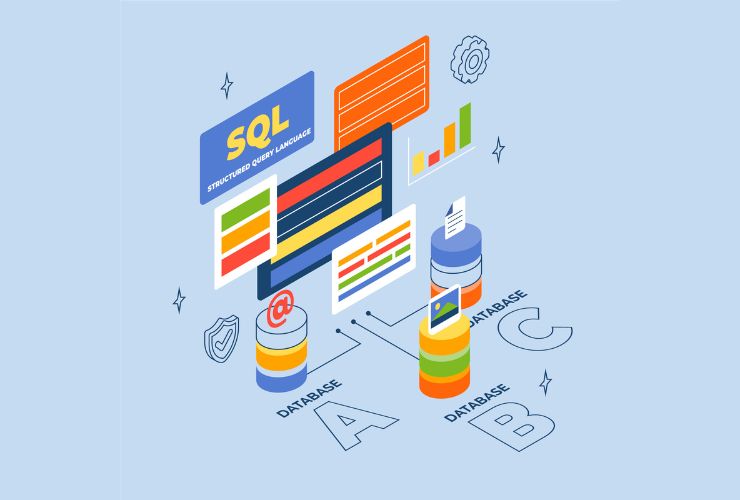Stored procedures, views, and triggers are critical components in SQL Server and other relational database systems that assist in managing, automating, and simplifying operations. While they all help simplify processes, they can also improve performance, maintainability, and security when implemented correctly.
On the other hand, a poor implementation or poor practices can create performance bottlenecks, data consistency errors, and debugging issues, as well as security issues. For the heavily data reliant organizations, these issues can have significant operational implications that negatively affect profitability, sustainability, and operations as a whole.
This article explores best practices for SQL stored procedures, triggers, and views.
It guides developers and DBAs to create secure, maintainable, and high-performing database solutions.
1. Best Practices for SQL Stored Procedures
Stored procedures are compiled SQL statements that allow the same database operation to be reused in an efficient and secure manner. It reduces repetitive code, increases performance, and encapsulates complex business logic.
Best Practices:
Use Parameterized Queries:
Use parameters to guard your database from SQL injection, to lessen the overhead of repeated query compilation and execution.
Keep Procedures Focused:
Define a single purpose for each procedure that allows for isolated execution. Avoid defining multiple procedures for unrelated tasks.
DO NOT USE SELECT *:
Instead of using SELECT *, specify the needed columns to avoid unnecessary I/O and reduce overhead in the querying process.
Use Error Handling:
Manage exceptions in SQL Server using TRY…CATCH to log errors and continue executing transactional code.
Use Comments and Documentation:
Provide clear comments, and maintain documentation for each procedure for improved maintainability and cross-team collaboration.
Test Performance Regularly:
Be sure to view execution plans regularly for long-running procedures to assess query development and performance.
Tip: Modularize procedures so researcher/use may occur, and maintain and implement normal nomenclature so procedures can be identified and managed properly.
2. Best Practices for SQL Triggers
Triggers are a certain kind of stored procedure that will be automatically fired by INSERT, UPDATE, or DELETE events. They are very useful, but can be a source of performance issues if not used properly.
Best practices:
Triggers Should be Lightweight:
Triggers should not be very heavy with processing; triggers should encapsulate logic that needs to be performed in response to an INSERT, UPDATE, or DELETE event.
Avoid Nested Triggers:
Triggers should avoided if possible nested triggers and recursion, as this only makes troubleshooting and debugging more complex and increases processing time.
Document Trigger Logic:
Explain what the trigger does, the conditions that must be met, and when it fires.
Monitor Trigger Performance:
Review trigger performance to keep track of their impact on performance, as they could slow a database down, especially as data volume increases.
Use AFTER Triggers:
AFTER triggers are optimal in any scenario where you want a predictable experience unless specifically needing an INSTEAD OF trigger.
Tip: You should review triggers periodically, as they can accumulate outdated logic over time and could be removed or streamlined.
3. SQL Views Best Practices
Views are virtual tables that simplify complex queries, abstract database logic, and can provide a secure interface to data.
Best Practices:
Use Views for Simplification:
Encapsulate joins, calculations, and aggregations in views to make queries more readable and reusable.
Avoid Overly Complex Views:
Limit the number of joins and calculations per view to prevent performance degradation.
Use Indexed Views for High Performance:
When appropriate, create indexed views to speed up repeated queries and improve performance.
Maintain Consistent Naming Conventions:
Clear naming conventions help developers understand the view’s purpose and content.
Secure Sensitive Data:
Use views to restrict access to specific columns or rows, enhancing data security.
Tip: Combine views with stored procedures to achieve efficient, reusable, and secure data access.
4. General Considerations Across Stored Procedures, Triggers, and Views
In addition to the practices specific to each type of object, there are a number of general practices you can follow which will generally help with maintainability, security, and performance:
Optimize Queries:
Periodically review execution plans, indexes, and query performance to identify bottlenecks and solve performance issues.
Use Version Control:
Put all database objects in version control systems for tracking changes, rollbacks, and collaboration.
Use Consistent Naming:
Develop a consistent and succinct naming approach for procedures, triggers, views and other database objects.
Document Everything:
Keep detailed documentation of database design, logic and changes so that you can reduce errors or operate without relying only on people’s memories / experiences in the future.
Monitoring and Tuning Performance:
You should continually monitor CPU, memory, and I/O, adjusting indexes, queries, and server settings where necessary.
Secure Access to Data:
Apply DB object role based access controls, and least privilege across all DB objects.
Test:
Perform unit testing, integration testing, regression testing, and other tests, particularly for more complex procedures, triggers, and views.
5. Advanced Tips for Optimization
Avoid Using Cursors Where Possible:
Prefer to use set logic rather that cursors where possible to improve performance.
Batch Large Transactions:
Separate large transactions into smaller batch transactions to reduce locking, and blocking.
Use Stored Procedure Parameters that Match Underlying Table Columns:
Make sure that stored procedure parameter types match to the underlying column types to reduce implicit conversions.
Conclusion
Stored procedures, triggers, and views are essential components of SQL Server and similar relational database systems. When properly developed and deployed using best practices, they can improve performance, maintainability, and security, while decreasing error rates and simplifying complex tasks.
By leveraging the best practices listed in this article, all database administrators and developers can:
- Optimize SQL Server processes.
- Ensure data integrity and security.
- Streamline maintenance and future development.
- Allow applications to function properly and efficiently.
Using these best practices will assist organizations in constructing stable and high-functioning databases that will support the essential growth and scalability needed for organizations competing in today’s data-driven environment.
Contact Us Today













 Database Development
Database Development












































